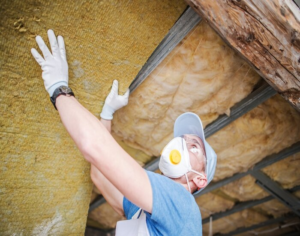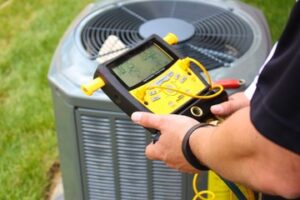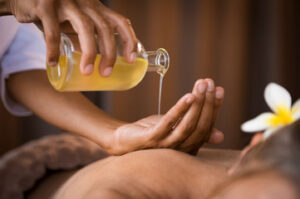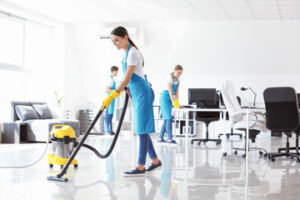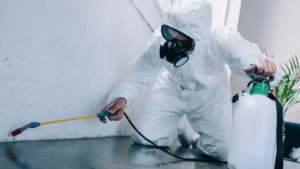Plumbers install, maintain, and repair pipes and fixtures that are used for water distribution and waste water disposal in residential, commercial, and industrial settings. They read blueprints and building codes to determine the layout of plumbing systems, and they collaborate with architects and construction teams to ensure that these systems are integrated into buildings seamlessly.
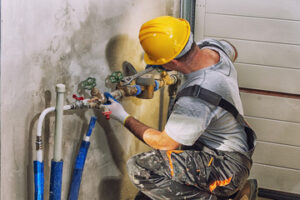
The faucet handle is a vital part of your home’s plumbing that provides comfort and functionality. It should be easy to grip and turn, especially when your hands are wet or soapy. It should also be durable and made from quality materials that resist rust, corrosion, and scratches. The handle should be compatible with the faucet’s valve and cartridge so that it can control water temperature and flow effectively. Finally, it should fit your style and lifestyle by complementing the design of your kitchen or bathroom.
If your faucet handle is stuck or difficult to turn, it’s a sign of mineral buildup or other issues that can be fixed easily. First, shut off the water supply to the faucet and remove the handle by unscrewing the nut. You may need a screwdriver, Allen wrench, or penetrating oil to loosen the screw. Once the handle is removed, you can inspect and replace the washer, O-rings, or seals if necessary. After replacing these components, reassemble the handle and cover plate. Finally, reattach the stem and tighten the retaining nut.
Lever handles are the most common type of faucet handle and are available in a variety of sizes and shapes. They are easy to use and require less twisting than knob handles. Joystick handles are another popular choice that allow you to turn the water on and off with a single movement. They are ideal for people with limited hand mobility or those who prefer a modern look.
If your faucet handle is leaking, the most likely culprit is the washer or O-rings. You can try to tighten them with a wrench or pliers, but you’ll probably need plumber’s grease to get them to come off more easily. You can buy these supplies at a hardware or home center, and they’re also available from most online retailers. Be sure to choose a brand with a warranty that offers peace of mind in case of defects or malfunctions. If you’re still having trouble, call a professional to take a closer look at the problem. They’ll be able to advise you on the best course of action for your specific situation.
Faucet Valve
The valve controls the flow of water. It consists of a stem that raises and lowers a rubber compression washer to stop and start the flow of water when the handle is turned. The washer is pressed against a concave water inlet at the bottom of the valve body. In older faucets, the diverter valve might be secured by a grooved ring; newer models may have a nut atop the spout. To remove this nut or screw, use a screwdriver or wrench.
The most common type of faucet valve is a ball valve with a network of holes and grooves that align with hot and cold water inlets. As the faucet handle is turned, the steel ball inside the network moves to open and close these holes. This type of valve has many small parts and can develop leaks as these parts wear out or become clogged with mineral deposits.
A second popular type of faucet valve is the cartridge. This faucet has a few moving parts and requires less maintenance. When the valve seat becomes worn or damaged, however, the faucet will leak. This can be repaired by replacing the valve seat or by removing the old cartridge and installing a new one.
Before attempting to repair your faucet, turn off the water supply at the main valve under your sink. If there are multiple braided water supply lines to the faucet, shut off each line individually by turning the knob or lever clockwise.
Once the water is off, you can begin to disassemble the faucet. Using a screwdriver, loosen the handle screw in the center. Some handles have decorative caps that cover the screw, so look for these and remove them if they are present. Once the handle is removed, the hex head of the valve stem assembly should be exposed. Some valves have a retaining clip or nut on the top that must be removed with pliers or an Allen wrench. Once this is done, the valve stem can be removed from the body. The valve seat should be cleaned by soaking in vinegar. Once the old valve seat is removed, a new one can be installed by slipping a plastic spanner cap over the end of the valve stem and twisting it in place with pliers. Then, a brass retainer clip is inserted into slots in the faucet body to hold the new cartridge in place.
Faucet Seat Washer
A faucet needs a watertight seal to hold back the incoming water supply when the handle is in the off position. This seal is usually created by a washer pressed tightly against the valve seat. If the washer wears out or the valve seat becomes pitted, water seeps through the hole and drips. Fortunately, replacing the washer and repairing the valve seat is a relatively simple task.
A leaking faucet may be caused by several issues, including corrosion of the valve seat or a loose O-ring. In some cases, simply tightening the O-ring can resolve the problem.
The leaking may occur from the spout or from the handle, and in many cases, it is caused by a worn valve seat. The valve seat is where sediments and minerals can build up, causing corrosion that eventually causes the washer to erode or break, leaving a gap for water to leak through. A plumber will repair the faucet by replacing the seat washer and cleaning the area around the seat.
In some cases, the valve seat is unrepairable and will need to be dressed. Dressing a valve seat is done by removing the stem and using emery cloth to smooth out any rough edges. A new washer will then be inserted and the faucet should be reassembled.
Another common issue is a noisy faucet, which can be caused by a worn washer or a loose packing nut. The noise can be reduced by replacing the washer or by repacking the packing nut with nontoxic plumber’s grease.
To replace the washer, remove the stem from the spout by turning it counterclockwise. If the old washer is still in place, use a wrench to remove it. A wrench or seat removal tool is needed to remove the seat, and it is important to use an exact replacement washer for the original size. It is also a good idea to install a washer style that is swiveling rather than fixed, which allows it to move more easily and create a better seal. When the washer is replaced, reassemble the faucet in reverse order of disassembly and spread a bit of petroleum jelly or plumber’s grease on the stem threads to lubricate it.
Faucet Supply Lines
Supply lines are the pipes that carry water to faucets. Changing out old, corroded or leaking supply lines under sinks is one of the most common plumbing repair tasks. When a homeowner undertakes this project, it is vital that they understand key tips to ensure the new supply line is installed correctly.
First, the water must be shut off. This can be done using either the shut-off valve under the sink or by turning off the main water line at the meter. Clear the cabinet of all items to provide enough workspace and place a towel down to absorb any dripping water. Start by unfastening the connector pipe that connects to the water supply valve, using a crescent wrench. Once the fastener is removed, the old line can be disconnected from the valve and the faucet. This will make it easier to remove the old line and avoid a mess.
After removing the old line, it is important to use Teflon tape to wrap the threads of the new connector. This will prevent the connector from coming loose in the future and protect the threads from damage caused by water pressure. It is also important to remember that when replacing a tap supply line, the connector size must match the faucet and shut-off valve. A mismatch will result in a leaky connection and could cause the system to corrode or break.
Plumbers also need to consider the type of tap and water line material before installing a new one. The type of material used determines its durability, ease of installation and more. There are a variety of options from which to choose, including copper, PVC and PEX tubing. Each has its own strengths and weaknesses.
For example, PVC is an affordable and durable option, while copper pipes are known for their longevity and strength. The choice of water line materials should be based on the specific needs of each home. In some cases, a plumber may need to reroute the water line to accommodate for renovations or other changes in the plumbing layout of a house.
